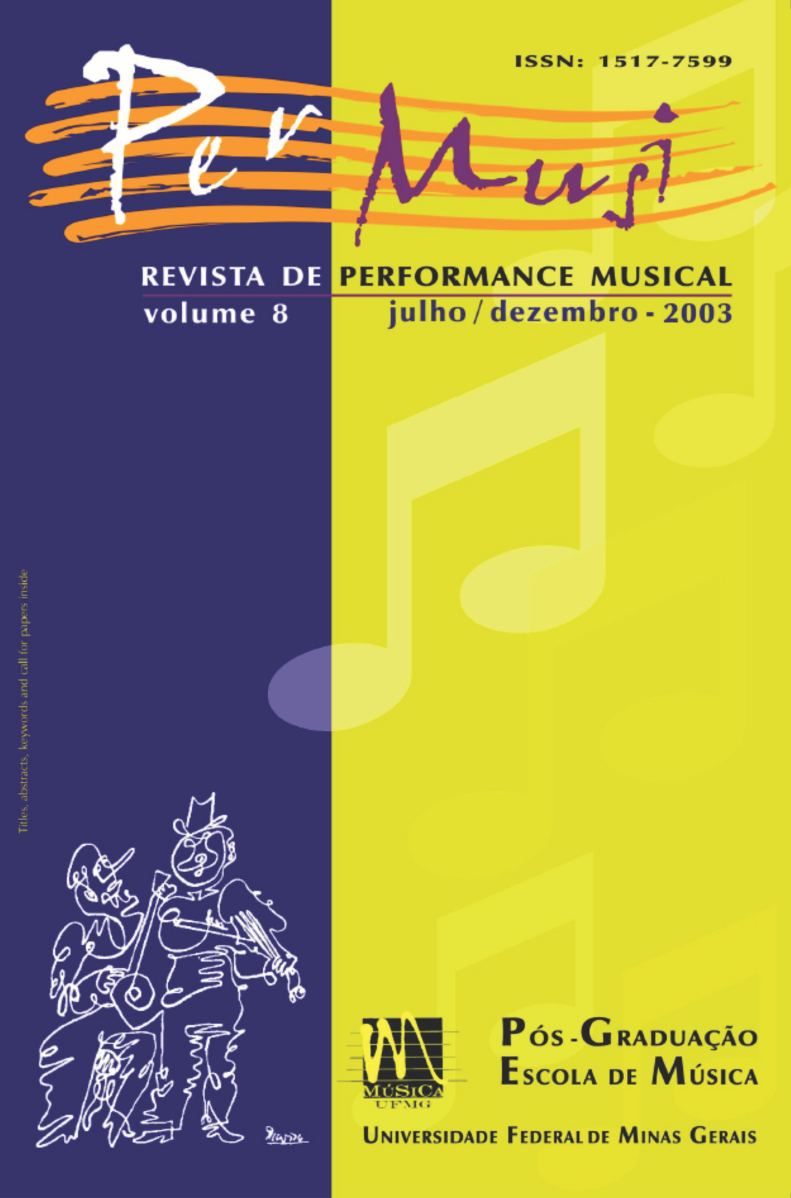Os ideais de entoação no século XVIII e suas conseqüências na prática interpretativa
DOI:
https://doi.org/10.35699/2317-6377.2003.55786Palavras-chave:
ornamentação, entoação, canto, castrati, interpretaçãoResumo
Neste artigo pretendemos identificar os ideais de entoação do século XVIII, quando os castrati italianos dominavam a prática e o ensino do canto. Veremos que esses ideais interferiam na prática interpretativa musical, especialmente no que diz respeito à execução de apojaturas, portamentos e ornamentos musicais que envolviam ‘’flutuações de freqüência’’ sonora.
Referências
AGRICOLA, J. F. Introduction to the art of singing. Tradução de Julianne C. Baird. New York: Cambridge University Press, 1995 (original de 1757).
DOSCHER, Barbara M. The functional unity of the singing voice. Boulder: The Scarecrow Press, 2a edicão, 1994.
MANCINI, Giambattista. Pratical reflections on the figurative art of singing. Trad. Pietro Buzzi. Boston: Gorham Press, 1912 (original de 1777).
MANCINI, Giambattist. Pensieri e riflessioni pratiche sopra il canto figurato. Viena: Ghelen, 1774.
SADIE, Stanley. The new grove dictionary of music and musicians. London: Macmillan Publishers Ltd., 1980.
SANFORD, Sally Allis. Seventeenth and eighteenth century vocal style and technique. Stanford University, Unpublished. Doctoral Dissertation, 1979.
TOSI, Pier Francesco. Observations on the florid song; or sentiments on the ancient and modern singers. Traduzido por Galliard. Londres: J. Wilcox, 1743 (original de 1723).
TOSI, Pier Francesco. Opinione de’ cantori antichi e moderni,, o sieno osservazione sopra il canto figurat. Bologna: 1723.
Downloads
Publicado
Edição
Seção
Licença
Copyright (c) 2003 Per Musi

Este trabalho está licenciado sob uma licença Creative Commons Attribution 4.0 International License.

Exceto onde está indicado, o conteúdo neste site está sob uma Licença Creative Commons - Atribuição 4.0 Internacional.












